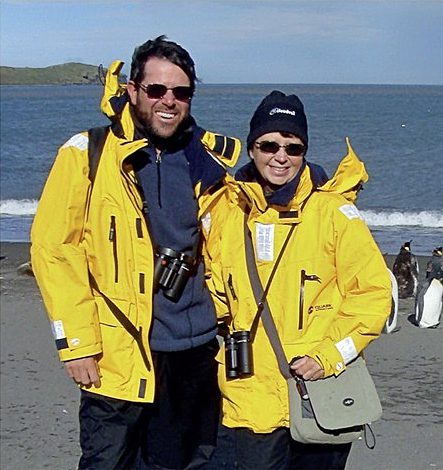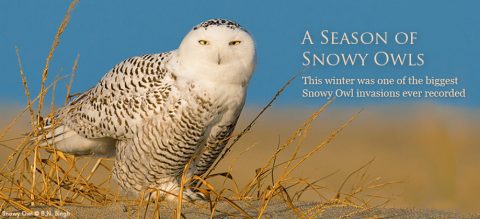How to Bird by Ear: Q&A With Michael O’Brien and Louise Zemaitis
By Marc Devokaitis
From the Spring 2014 issue of Living Bird magazine.
April 15, 2014
Michael O’Brien and Louise Zemaitis are naturalists in Cape May, New Jersey, who share an intense passion for the natural world. Together they lead birding trips throughout the Western Hemisphere. Louise is an artist and has coordinated the Monarch Monitoring Project in Cape May for more than two decades. Michael has co-authored several books on bird identification and is the primary author of Larkwire, an app for learning bird sounds. We got some advice from Michael and Louise for birders who want to learn to identify birds by ear.
Why bird by ear?
Michael: There are many reasons. Our eyes can only see what is in front of us, more or less, but we can hear sounds from every direction. This can help you find birds even if you don’t know what you are listening to. Some birds, for instance those that are nocturnal or have skulking habits, are heard much more often than seen. Identifying them by ear may be the only option. Then there are birds that look almost identical to each other, but can be distinguished by differences in their voices.
Louise: Listening closely can open up the natural world in a new way. You start to notice how birds use different calls and songs in different circumstances. Calls given to warn of a nearby hawk sound different from calls given near a nest, and both are different from a song the same bird sings to defend its territory.
How should someone who is a complete novice begin?
Michael: Many people begin watching birds in their own backyard, and that is also a great place to start listening to them. Listen to the birds that you see regularly, and try to get those sounds and those birds connected in your head.
Louise: It helps to go out birding with people who are experienced in sound identification. Having species and songs pointed out to you in the field helps you make those connections more quickly, though nothing beats the adventure of tracking something down to figure it out yourself.
Michael: Once you learn a handful of common bird sounds, you have a framework for comparison, so that is something to work toward. After you learn what an American Robin’s song sounds like, you are better equipped not only to ID robins, but also other birds with robin-like songs such as tanagers and orioles.
What are some tools that you use to teach beginners a bird song?
Michael: The best tools are the ones that make you into an active learner. There are mental tools such as mnemonic devices, Oh sweet Canada Canada Canada for White-throated Sparrow, for instance. Different calls lend themselves to different memory tools. We also encourage people who want to learn bird sounds to write down what they hear in whatever way works for them. That active engagement helps you think a little more about what you are hearing and helps you to remember it better.
What about listening to recordings?
Louise: Many of us learned bird sounds from collections of recordings. That is definitely helpful, and with the use of smartphones, most North American birders can have high-quality digital recordings of most species at their fingertips. It makes for a handy reference in the field. Tutorials such as “Birding by Ear” in the Peterson series are particularly helpful, because they group similar songs together for comparison. And apps such as Larkwire make learning bird songs into an interactive game based on song groups.
And for a person who is moving beyond the beginner stage?
Michael: The more time you can spend in the field with experts the better. And try to explore all of the different tools that are available to see what works for you. Once you know a few sounds, you might find great value in looking at spectrograms (visual representations of soundwaves). And you will quickly realize that the more you learn, the more rewarding your birding experience becomes. When you know most of the sounds in an area, it becomes possible to recognize a sound that isn’t supposed to be there. That is the way many a rare bird gets found.
Find out more information about birding by ear.
All About Birds
is a free resource
Available for everyone,
funded by donors like you
American Kestrel by Blair Dudeck / Macaulay Library




